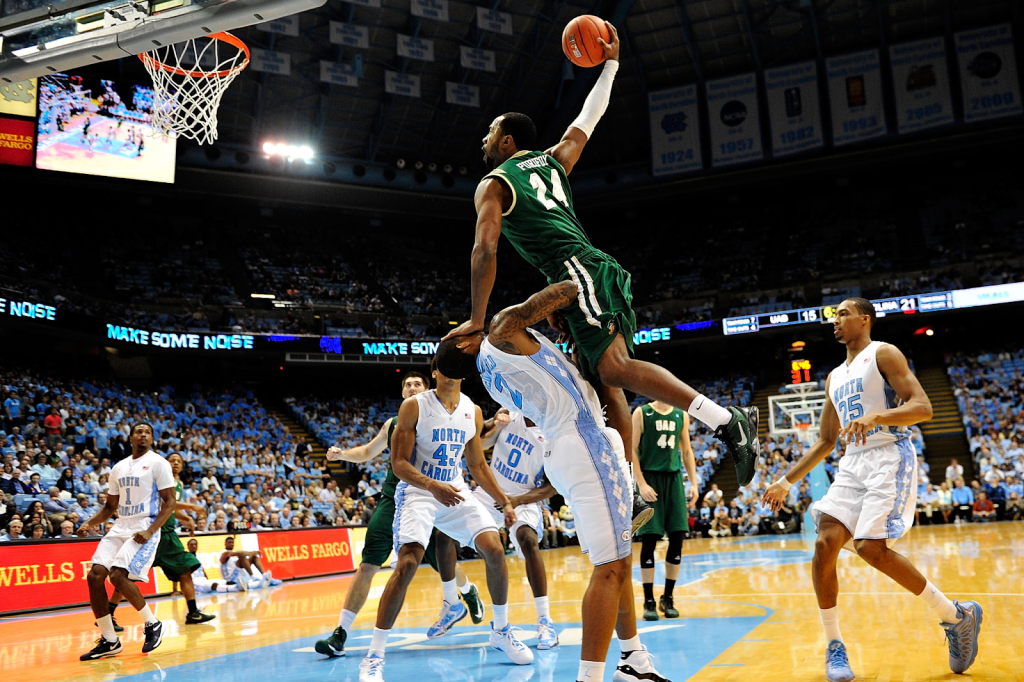What is a Charge in Basketball
A charge in basketball refers to a defensive player positioning themselves legally to absorb the impact of an offensive player who is moving with the ball. The defensive player must establish a solid, stationary position outside the “restricted area” (also known as the “paint”) before the offensive player makes contact. Executing a successful charge requires impeccable timing and positioning. The defensive player must anticipate the offensive player’s move, establish their position, and maintain it firmly. This involves keeping both feet on the ground, with the torso facing the opponent. Read about How Long Are High School Basketball Games
Rules and Regulations
For what is a charge in basketball to be called, several conditions must be met:
- The defensive player must establish a position before the offensive player.
- The defensive player must be in a legal guarding position, which means they can’t move sideways or initiate contact.
- The contact made by the offensive player must be both visible and significant.
Also read the Article: 1-2-2 Zone Defense in Basketball
Strategic Importance
Taking charge isn’t just about preventing points; it’s about shifting the game’s dynamics. A successful charge can demoralize the opposing team and energize the defenders and the crowd. While a charge involves the defender absorbing the contact, a block occurs when the defender impedes the progress of the offensive player through illegal contact.
Famous Charge Moments in Basketball History
Numerous games have been decided by crucial charge calls, making them unforgettable moments in basketball history. One such instance is the mention a famous moment.
Developing Charge-Taking Skills
To excel at taking charges, players need to hone their footwork, timing, and ability to read the opponent’s movements. Coaches play a vital role in training players for charge-taking. Drills focusing on positioning and reaction time can greatly enhance a player’s charge effectiveness.
Advantages and Disadvantages of Taking Charges
Advantages include turnovers, changes in possession, and foul trouble for key opponents. Disadvantages involve the risk of incorrect calls leading to player fouls.
Influence on Momentum and Game Changers
A successful charge can swiftly shift momentum and inspire a team’s comeback, demonstrating the psychological impact of this play.
Impact on Player Fouls and Turnovers
Taking charges can create foul trouble for offensive players, leading to strategic advantages for the defensive team.
Psychological Aspect of Charging
Charging embodies determination and sacrifice, illustrating a player’s commitment to the team’s success.
Fan and Player Perspectives
Fans and players alike appreciate the grit displayed during charge plays, often regarding them as game-changing moments.
Executing a successful charge demands a combination of physical and mental attributes. Players need to possess quick reflexes, the ability to read their opponents’ movements, and the courage to stand their ground despite the impending collision.
The Art of Drawing Charges
Drawing a charge is a skill mastered by both defensive players and offensive players with a strategic edge. Offensive players can catch defenders off-guard by abruptly changing their pace and direction, causing defenders to make contact. This results in offensive players creating opportunities to score or drawing fouls.
Charge or Flop: The Controversy
There’s an ongoing debate about players exaggerating contact to draw charges, sometimes referred to as “flopping.” This tactic aims to fool referees into making favorable calls. While some view it as a smart play, others consider it unsportsmanlike. Charging rules have evolved over the years to strike a balance between protecting offensive players and allowing defenders to play a physical game. Changes in rules and interpretations have influenced how players approach charging situations.
Teaching Charge Fundamentals to Youth Players
Youth basketball programs often teach the basics of charge-taking to instill defensive discipline from an early age. Emphasizing safety and proper technique helps create a strong foundation for players’ defensive skills.The significance of taking charges becomes more pronounced in crunch time – the crucial moments of a game where a single possession can determine the outcome. Players who can stay composed and execute charges under pressure can become game-changers.
The Unsung Heroes of the Charge
While flashy dunks and three-pointers may steal the spotlight, players who consistently take charge contribute significantly to their team’s success. Their selfless actions can inspire teammates and build a strong team ethos. The art of taking charges transcends borders, with players around the world utilizing this defensive tactic. The universality of the charge showcases basketball’s shared language and strategy.
Coaches often value players who are willing to sacrifice their bodies for the greater good. Players who embrace the charge exemplify qualities such as discipline, selflessness, and commitment.
Conclusion
In the realm of what is a charge in basketball is more than just a defensive maneuver – it’s a testament to a player’s readiness to sacrifice for the team’s victory. Perfecting this art can turn the tide of a game and etch a player’s name in basketball lore.
FAQs
Q. Are charges always called correctly?
A. Charges, like any subjective call, can be contentious. Referees make split-second decisions based on their perspective.
Q. Can offensive players draw charges too?
A. Yes, offensive players can draw charges by establishing a legal guarding position against a defender.
Q. Do charges lead to injuries?
A. While charges involve contact, players are trained to minimize risks. Injuries are relatively rare.
Q. What’s the difference between an offensive foul and a charge?
A. An offensive foul includes various illegal moves, while a charge specifically involves the defensive player establishing position.
Q. Can charges change the outcome of a game?
A. Absolutely. A single well-timed charge can sway momentum and influence the final score.
Alina is a passionate basketball player with a love for the game that knows no bounds. With years of experience on the court, she brings unmatched skill and dedication to her team. Alina’s commitment to excellence both on and off the court sets her apart as a leader and motivator. Whether she’s driving to the basket or encouraging her teammates, Alina’s enthusiasm and sportsmanship shine through. As a valuable member of the basketball team, Alina’s presence elevates the spirit and performance of the entire squad.







